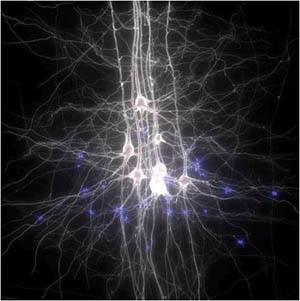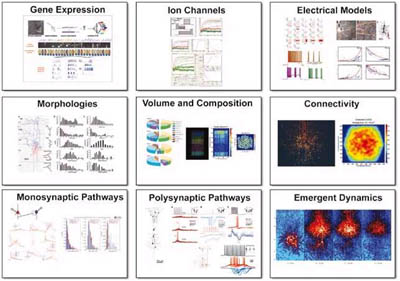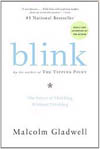
Welcome to the Club of Amsterdam Journal.
The Club of Amsterdam wishes you a great summer break!
Felix Bopp, editor-in-chief
The Indian Rupee – U.S. Dollar Exchange Rate. Will the Rupee depreciate?

May 2011 – A White Paper by Evalueserve
Special issue provided for the Club of Amsterdam.
Authors: Ashutosh Gupta is the Vice President of Investment Research and Chief Transition Officer at Evalueserve. Surbhee Sirohi is a Manager in the Investment Research group at Evalueserve.

Executive Summary
During the last decade, among major economies, India has achieved consistently impressive growth, second only to China. In the first half of fiscal 2010-11, the Indian economy grew at a healthy rate of 8.9%, and the majority of global growth going forward is expected to be driven by developing countries, specifically India and China. India is home to a vibrant services economy and a hotbed of outsourcing. Its economy has become increasingly interlinked with global markets as trade has flourished.
The USD-INR exchange rate is an important indicator of investor sentiment and can significantly impact not only the fortunes of individual firms and sectors but also the government. While this exchange rate has been very stable overall for the last five years (44.86 on April 24th, 2006 and 44.34 on April 15th, 2011), there have been periods of significant volatility. For example, USD-INR moved from 40 to 51.50 from March 2008 to March 2009. During the past 12 months, it has traded in a relatively narrow range, between 47.33 and 43.99. We believe there is a significant downside risk to USD-INR exchange rate and this paper will explore some of the risk factors behind this:
- Inflation is at an all-time high; the Consumer Price Index (CPI) increased by 10.88% in 2009 and by 13.19% in 2010. The monetary policy changes undertaken by the government to control inflation have been ineffective. We believe this is because inflation is being driven primarily by structural supply side challenges such as lack of agricultural infrastructure, low crop yields, and the absence of organized retail.
- India is one of the fastest growing economies and is considered a favored destination for investment. Nevertheless, it witnessed a decline in Foreign Direct Investments (FDI) in 2010, making it the only BRIC country where this happened. This is troubling as FDI is an important indicator of investors’ faith in a country’s long-term prospects. Foreign Institutional Investment (FII), which provides short-term portfolio investment money inflows, has been buoyant, but these funds are volatile by nature and are prone to “flight risk” at the first signs of trouble, something that happened during the financial crisis.
- Recent widespread corruption scandals have reinforced the negative perception of governance deficit in India and raised doubts about the availability of a level playing field for businesses. This, combined with regulatory and tax uncertainty, will deter many foreign investors. For example, several global firms who invested in India’s telecom sector have had to write off billions of dollars of their investments.
- Another major source of foreign currency inflows to India is remittances; India received USD 55 billion in remittances during 2010. This money limits the country’s current account deficit. The Middle East accounts for a major share of this inflow and the current turmoil in the region may negatively influence it as Indians abroad leave the region due to security concerns. Remittances from countries like Saudi Arabia and UAE, where the strife has not spread, could also experience a decline as unemployment in these nation rises.
- The government finances are in a bad shape and the combined central and state government deficit has stubbornly stayed around 10% of GDP. Experts believe that oil prices will remain high in the near future. This is a major concern for India as it imports about 70% of its oil and efforts to increase the production capacity of petroleum and natural gas domestically have not been very successful.
- India’s current deficit is about 3%, the level it reached during the crisis of the 1990s. A current account deficit is not bad by itself for a growing economy if it helps build important long-term productive assets. However, in India’s case it is due to insufficient savings, especially by the government. This does not bode well for the economy. Moreover, given India’s rising import bill and threat to remittances, the deficit will remain high in the near future, creating pressure on the Indian Rupee.
- The United States (US) economy seems to be on the path to recovery. It is very likely that the improving US economy will draw more funds at the expense of emerging countries. This can already be seen in the FDI inflows, which increased by 43% in 2010.
[ … ]
Conclusion
After studying the various demand and supply factors, we have arrived at three likely scenarios:
First Scenario – Rupee Depreciation
This scenario is likely to occur if oil prices continue to rise or if FII money “exits” because of a crisis of confidence. Based on past evidence, even a relatively orderly outflow of USD 15 billion of FII money over a year could result in the INR depreciating by 22-30%. This would imply an exchange rate in the range of INR 55-60 to USD 1. It could get even worse if the flight of capital were to take place over a shorter period, which would cause massive concern among businesses and the government, since it would imply a higher cost of petrol, diesel, and petroleum products in India, leading to even higher food prices and Consumer Price Index. The current account deficit would balloon and the rising inflation could create a vicious cycle.
Second Scenario – Rupee Appreciation
This scenario is likely to occur if the FII money continues to flow in and FDI levels improve. The stock markets will climb and there will be a rise in demand for INR. An appreciating Rupee will make imports cheaper and lead to better managed deficits and inflation. It must be pointed out that Rupee appreciation would erode India’s cost advantage in the export sector and negatively affect the booming ITES sector as well as the textile sector and this in turn would invite government intervention. This is what happened just before the onset of the 2008 financial crisis when the USD-INR touched 39 and the Indian government repeatedly intervened in the currency markets to halt the appreciation of the Rupee.
Third Scenario – Status Quo
This is the most benign scenario. The exchange rate continues to move in its current range and appreciates over the long term as the economy continues to develop and India strengthens its position in the global markets. The government’s efforts to improve agricultural infrastructure bear fruit in the longer term and inflation declines. The rate fluctuations do not cause any major disruption in the trade environment.
According to our analysis, during the next two years the probability of the first scenario (depreciation of Indian Rupee by 20%) is the highest (about 50%) while the other two scenarios have an equal probability of approximately 25% each. In other words, there will be pressure on the Rupee unless steps are taken to fix structural issues described in this article. The Indian government and RBI are well aware of this risk and are definitely hoping for the third scenario, in which India essentially grows its way out of trouble over a couple of decades and where they only have to intervene occasionally to smoothen out excess volatility. As Subir Gokarn, a deputy governor of RBI recently said, “Intervention is not costless, it simply transfers the cost from one constituency of the economy to another.”
You can download the White Paper click here
About Evalueserve
Evalueserve is a global specialist for knowledge processes with a global team of over 2,200 professionals. As a trusted partner, Evalueserve analyzes, improves and executes knowledge-intensive processes and leverages its proprietary technology to enhance efficiency and effectiveness. Evalueserve has dedicated on-site teams and scalable global knowledge centers in Chile, China, India and Romania, which provide multi-time zone and multi-lingual services.
Evalueserve’s knowledge solutions include customized research and analytics services for leading-edge companies worldwide. By working with Evalueserve, clients benefit from higher productivity, improved quality, freed-up management time, better access to knowledge and information across all parts of the company, and adding new capabilities to their organization.
New Video

the future of European Democracy
Thursday, June 23, 2011
Hardy F. Schloer, Owner, Schloer Consulting Group
Democracy is dead, as we know it!
The Blue Brain Project
Reconstructing the brain piece by piece and building a virtual brain in a supercomputer — these are some of the goals of the Blue Brain Project. The virtual brain will be an exceptional tool giving neuroscientists a new understanding of the brain and a better understanding of neurological diseases.
The Blue Brain project began in 2005 with an agreement between the EPFL and IBM, which supplied the BlueGene/L supercomputer acquired by EPFL to build the virtual brain.
The computing power needed is considerable. Each simulated neuron requires the equivalent of a laptop computer. A model of the whole brain would have billions. Supercomputing technology is rapidly approaching a level where simulating the whole brain becomes a concrete possibility.
As a first step, the project succeeded in simulating a rat cortical column. This neuronal network, the size of a pinhead, recurs repeatedly in the cortex. A rat’s brain has about 100,000 columns of in the order of 10,000 neurons each. In humans, the numbers are dizzying — a human cortex may have as many as two million columns, each having in the order of 100,000 neurons each.
Blue Brain is a resounding success. In five years of work, Henry Markram’s team has perfected a facility that can create realistic models of one of the brain’s essential building blocks. This process is entirely data driven and essentially automatically executed on the supercomputer. Meanwhile the generated models show a behavior already observed in years of neuroscientific experiments. These models will be basic building blocks for larger scale models leading towards a complete virtual brain.
[ … ]
Modeling
The Builder Concept
All mathematical models used in Blue Brain virtual experiments are created by a Builder.This isa software application that generates a computer model of a particular brain structure. Models are based on the experimental data collected and organized in the first two steps of the Blue Brain workflow and on the mathematical abstractions created in the third step. The Blue Brain modeling strategy requires the construction of models representing different levels of brain organization.
Each of these models requires its own builder. Below we describe the goals, characteristics and status of individual builders.
Cell Builder
The purpose of the Cell Builder is to build models of individual nerve cells.
The nerve cells of the mammalian brain display great diversity in their morphology and electrical behavior. Later in this report, we suggest that this diversity makes a crucial contribution to the robust principles governing the construction and dynamic behavior of neural circuits.
The design of the Cell Builder is based on a strategy of incorporating the maximum possible number of biophysical constraints from experimental data and from the results of Predictive Reverse Engineering. The remaining parameters are optimized under these constraints.

Microcircuit Builder
The purpose of the Microcircuit Builder is to build models of neural microcircuits in any part of the brain.
The integration and processing of information by the mammalian brain depends in an essential way on structured interconnectivity among nerve cells. At the microcircuit level, circuits appear to be determined primarily by the composition of a given area of the brain in terms of different types of cell, by the positions of these cells, and by their respective morphologies. The Microcircuit Builder uses this data to faithfully model neuronal microcircuitry.

Mesocircuit Builder
The purpose of the Mesocircuit Builder is to model mesoscale neural circuitry i.e. circuits spanning several neocortical columns, modules or microcircuits.
Every region of the neocortex contains multiple replicas of neuromicrocircuits, which are basically similar but variable in their details, allowing diversification and specialization. These microcircuits are highly interconnected.
The Mesocircuit Builder, currently in the exploration phase, will make it possible to build models of the connections among microcircuits. The planned models will include experimental data on projections formed by neurons within a brain area (e.g. S1 of the somatosensory cortex), models of mid-range fiber growth, models of the ways fibers penetrate a microcircuit, and the detection of touches between incoming fibers and the rest of the circuit.

Experiment Builder
The primary purpose of the Experiment Builder is to create explicit descriptions of experimental environments and protocols allowing their replication in silico.
The Experiment Builder will include features sup¬porting the automated extraction of conditions and protocols from literature, the design of new protocols, and the use of these protocols in experiments based on Blue Brain models. In brief, the Experiment Builder will become a primary control interface for the Blue Brain Facility.
What’s next?
The ultimate goals of brain simulation are to answer age-old questions about how we think, remember, learn and feel, to discover new treatments for the scourge of brain disease and to build new computer technologies that exploit what we have learned about the brain.
Blue Brain is a first step in this direction. But we need to go further.
This is why Blue Brain recently joined with other 12 partners to propose the Human Brain Project – a very large 10 year project that will pursue precisely these aims. The new grouping has just been awarded a Euro 1.4 million European grant to formulate a detailed proposal.
The EU decision to launch the project is expected in 2012.
text & images ©BBP/EPFL
Club of Amsterdam blog

Club of Amsterdam blog
http://clubofamsterdam.blogspot.com
June 13: No more tool, no more processes, no more ruling, no more treaties.
March 24: Socratic Innovation
January 1: On the meaning of words
November 30: The happy organisation – a deontological theory of happiness
November 26: Utilitarianism for a broken future.
News about the Future

Driving a robot from Space Station
Meet Justin, an android who will soon be controlled remotely by the astronauts in ESA’s Columbus laboratory on the International Space Station.
To help turn robotics and telepresence into a standard tool for space missions, ESA is linking the Space Station and Earth for remotely controlling terrestrial robotic experiments from the orbital outpost.
This Meteron (Multi-purpose End-To-End Robotic Operations Network) initiative is a testbed for future missions to the Moon, Mars and other celestial bodies. In the first Meteron tests, the Station astronauts will operate ESA’s Eurobot prototype from a computer equipped with special screens and a joystick.
This prototype is a four-wheel rover with two arms, an advanced navigation system, cameras and sensors that has been under testing since 2008 at the Agency’s ESTEC space research and technology centre in the Netherlands.
In the next phase, the engineers will allow astronauts to control a robot with the sense of force and ‘touch’. It can be connected to robots like Justin, developed by the DLR German Aerospace Center.
“With these senses, the astronauts will have a real feeling of the forces that the arms of the robots are experiencing in their environment,” explains André Schiele, in charge of ESA’s Telerobotics & Haptics Laboratory.

Kite Power
Current wind power generation relies on rigid supporting structures and is limited to altitudes up to 200 m. Wind at higher altitudes is significantly stronger and more persistent. To access this major potential of renewable energy, the Kite Power research group is developing a technology based on inflatable membrane wings which are tethered to a motor/generator unit on the ground. The present kite power demonstrator system operates a 25 or 50 m2 kite in periodic pumping mode to generate 20 kW mechanical reel-out power. Systematic testing and improvement has resulted in more than 100 completed pumping cycles since January 2010, indicating a continuous increase in cycle efficiency.
Fast fashion meets luxury labels
Take a stroll down London’s Old Bond Street or Milan’s Via Montenapoleone and you will see the latest offerings of Chanel and Gucci. Hop over to Oxford Street or Corso Vittorio Emanuele, and you will discover the window displays of H&M and Zara are exhibiting pretty much the same designs. Guess which is flush with cash? INSEAD Assistant Professor, Frederic Godart, has some surprising predictions as to which way this lucrative market is heading.
Recommended Book

Blink: The Power of Thinking Without Thinking
By Malcolm Gladwell
Blink is about the first two seconds of looking–the decisive glance that knows in an instant. Gladwell, the best-selling author of The Tipping Point, campaigns for snap judgments and mind reading with a gift for translating research into splendid storytelling. Building his case with scenes from a marriage, heart attack triage, speed dating, choking on the golf course, selling cars, and military maneuvers, he persuades readers to think small and focus on the meaning of “thin slices” of behavior. The key is to rely on our “adaptive unconscious” – a 24/7 mental valet – that provides us with instant and sophisticated information to warn of danger, read a stranger, or react to a new idea.
Gladwell includes caveats about leaping to conclusions: marketers can manipulate our first impressions, high arousal moments make us “mind blind,” focusing on the wrong cue leaves us vulnerable to “the Warren Harding Effect” (i.e., voting for a handsome but hapless president). In a provocative chapter that exposes the “dark side of blink,” he illuminates the failure of rapid cognition in the tragic stakeout and murder of Amadou Diallo in the Bronx. He underlines studies about autism, facial reading and cardio uptick to urge training that enhances high-stakes decision-making. In this brilliant, cage-rattling book, one can only wish for a thicker slice of Gladwell’s ideas about what Blink Camp might look like. – Barbara Mackoff
Zeitgeist: Moving Forward
Zeitgeist: Moving Forward, by director Peter Joseph, is a feature length documentary work which will present a case for a needed transition out of the current socioeconomic monetary paradigm which governs the entire world society.
This subject matter will transcend the issues of cultural relativism and traditional ideology and move to relate the core, empirical “life ground” attributes of human and social survival, extrapolating those immutable natural laws into a new sustainable social paradigm called a “Resource-Based Economy”.
Michio Kaku and Carl Sagan are not affiliated with the Zeitgeist Movement.
This is the Official Online (Youtube) Release of “Zeitgeist: Moving Forward” by Peter Joseph. 2 hr and 42 min
On Jan. 15th, 2011, “Zeitgeist: Moving Forward” was released theatrically to sold out crowds in 60 countries; 31 languages; 295 cities and 341 Venues. It has been noted as the largest non-profit independent film release in history.
Futurist Portrait: Syd Mead

“There are more people in the world who make things than there are people who think of things to make.” – Syd Mead
Sydney Jay Mead was born in St. Paul Minnesota, July 18th, 1933 but spent only a few years there before moving to what would be the second of many homes throughout the western United States prior to graduating from High School in Colorado Springs, Colorado in 1951. After serving a three year enlistment in the U.S. Army, Syd Mead continued on to the Art Center School in Los Angeles, (now the Art Center College of Design, Pasadena) where he graduated with great distinction in June of 1959. He was immediately recruited by the Ford Motor Company’s Advanced Styling Studio under the management of Elwood Engle which he left after 2 years in order to accept a variety of assignments to illustrate books and catalogues for large corporate entities such as United State Steel, Celanese, Allis Chalmers and Atlas Cement. In 1970, he launched Syd Mead Inc. in Detroit, Michigan to accommodate the high caliber of offers he received, most notably the PHILIPS ELECTRONICS. As the principal of his newly formed corporation in the 1970’s, Syd Mead spent about a third of his time in Europe primarily to provide designs and illustrations for Philips of Holland. Together with his roster of major American clients, he continues to make his creative mark, internationally. Throughout the 1970’s and 1980’s, Syd Mead, Inc. provided architectural renderings both interior and exterior, for such clients as Intercontinental Hotels, 3D International, Harwood Taylor & Associates, Don Ghia, and Gresham & Smith, to mention a few. His architectural clients have recently expanded to include the New York firm of Philip Koether Architects for which he designed the interior of a Manhattan eatery. Design activity accelerated after the corporate and personal move to California in 1975. In 1979, projects began to include work with most major studios, on such feature films as Star Trek: The Motion Picture, followed by, Bladerunner, TRON, 2010, Short Circuit, Aliens, Time Cop, Johnny Mnemonic, and most recently, “Mission Impossible-3” starring Tom Cruise for director J.J. Abrams. Beginning in 1983, Syd began to develop close working relationships with a number of major Japanese corporate clients, including; Sony, Minolta, Dentsu, Dyflex, Tiger, Seibu, Mitsukoshi, Bandai, NHK and Honda as well as contributing to two Japanese film projects, The New Yamato and Crises 2050. In the 1990s’, Syd supplied designs for two Japanese toy icons, “The New Yamato” and all eight robot characters in the new Turn-A Gundam mobile suite series which were also seen as characters in Television shows.
With transportation design as his first love, Syd Mead seldom misses an opportunity to provide his unique blend of futurism and believability to those projects consisting of a vehicle that travels from “A” to ‘B”. Whether it be designing solar powered unicycles, show cars, luxury yachts, cruise ships, or the interiors of private 747’s, each receives the same attention to detail within a perfectly designed scenario. This combination has become a Syd Mead trademark and has been seen in everything from concept cars for Ford Motor Company to futuristic “Hypervans” which have been the subject of his latest full color illustrations.
Syd Mead continues an active schedule of one man shows, which started with an invitation to exhibit at Documenta 6, Kassel, West Germany in 1973. His work has since been exhibited in Japan, Italy, California, and Spain. In 1983 in response to an in invitation from Chrysler Corporation to be a guest speaker to their design staff, Syd Mead assembled a selection of slides to visually enhance his lecture. The resulting presentation was a resounding success and has since been expanded and enhanced with computer generated imagery specifically assembled at the requests of such clients as Disney, Carnegie Mellon University, Purdue, Pratt University, the Society of Illustrators., and many others both academic and corporate around the world. In March of 2010, Syd completed a four city tour in Australia to capacity audiences at each venue.
Always an advocate of new technologies, Syd Mead has expanded his horizons to include computer illustrations and graphics by mastering a variety of Softwares. Beginning with the official poster of the 1991 Concours d’Elegance “Eyes on the Classics” in Detroit, Michigan, Mr. Mead has attempted to utilize the latest in available techniques to their best advantage. In 1993, a digital gallery comprised of 50 examples of his art with interface screens designed by Syd Mead became one of the first CD ROM’s released in Japan in 1992 and in 2004 in response to many requests, cooperated with the Gnomon School of Visual Effects to produce a 4 volume, “How To” DVD series titled, “TECHNIQUES OF SYD MEAD” which continues to be sought after by designers around the world.
His one man show, “Cavalcade to the Crimson Castle” consisting of 114 original paintings and illustrations, enjoyed a three month showing at the Center for the Arts in San Francisco in the Fall of 1996. The highlight of the show turned out to be Syd’s presentation and lecture attracted an audience that exceeded the available capacity of the auditorium. Subsequent personal appearances at schools across the country have attracted record numbers. A touring exhibition of his work is now in the planning stage to mark the 40th anniversary of Syd Mead Inc.
In February 1998, Syd Mead relocated his studio to Pasadena, California, where he continues to be involved in a variety of design projects. He recently completed work on a documentary of his career with director Joaquin Montalvan, “VISUAL FUTURIST”, was released in May of 2007 on DVD and is available through the virtual Oblagon bookstore on the Syd Mead official webpage WWW.SYDMEAD.COM . Mead attributes success in an astonishing range of creative activities to the premise that imagination…the idea, supersedes technique. “There are more people in the world who make things than there are people who think of things to make.”
2019: A Future Imagined HD by Jim Hunter
Visual Futurist Syd Mead reflects upon the nature of creativity and how it drives the future in 1920×1080 progressive high definition.
Agenda
| Past Season Events 2010/2011 | ||
| Oct 14, 2010: the future of Hacking Nov 25, 2010: the future of Happiness Jan 20, 2011: the future of Financial Infrastructure Feb 17, 2011: the future of Services March 17, 2011: the future of Shell April 14, 2011: the future of the Human Mind May 19, 2011: the future of Singularity June 23, 2011: the future of European Democracy | ||
 | ||




Customer Reviews
Thanks for submitting your comment!